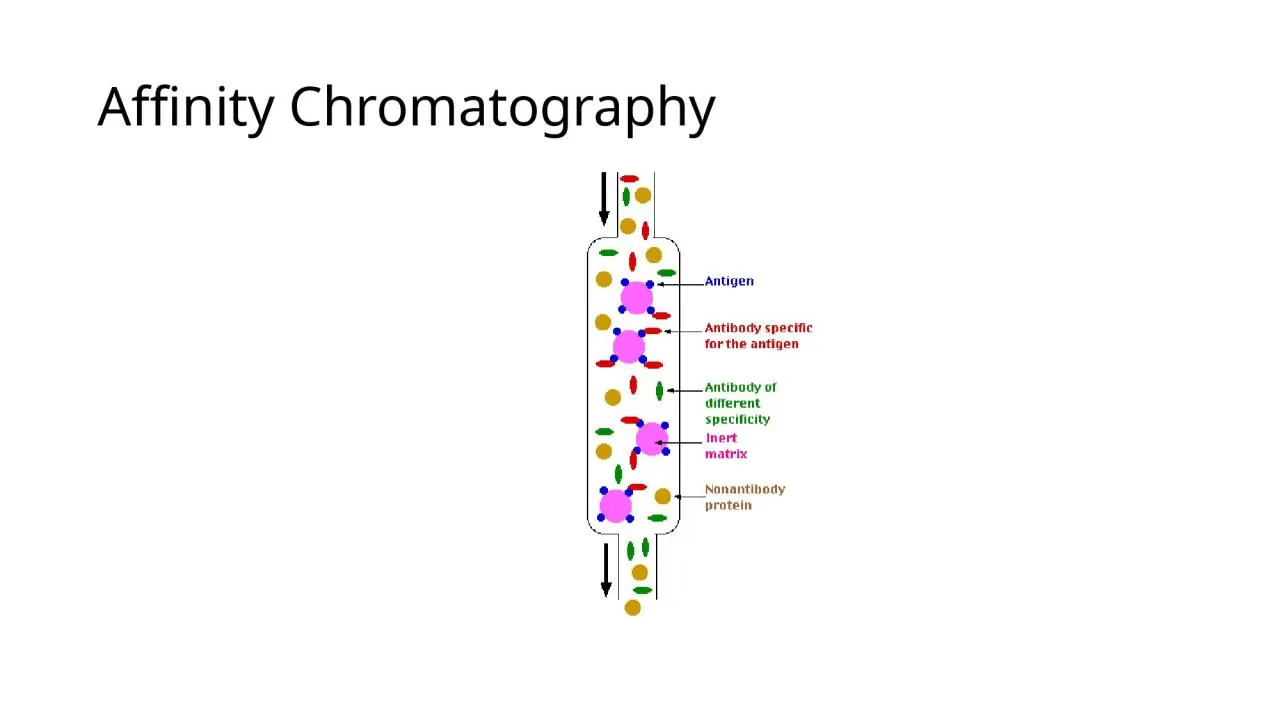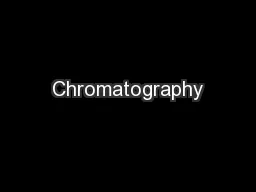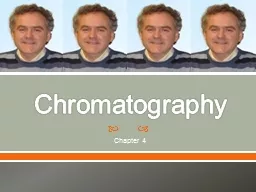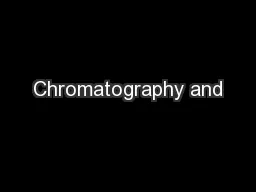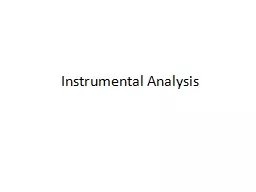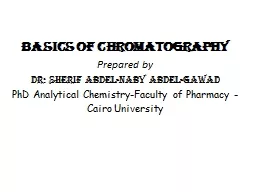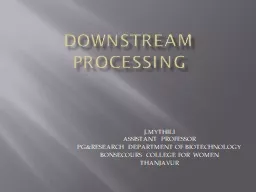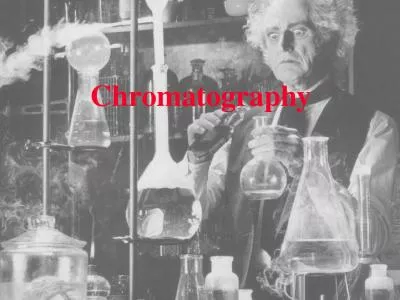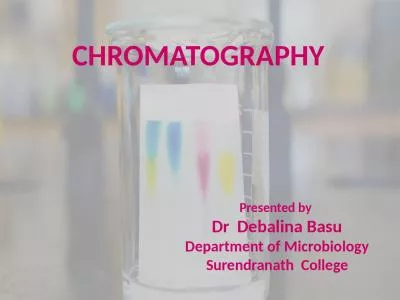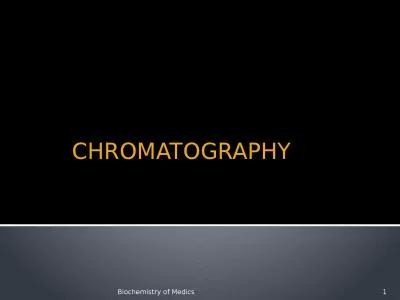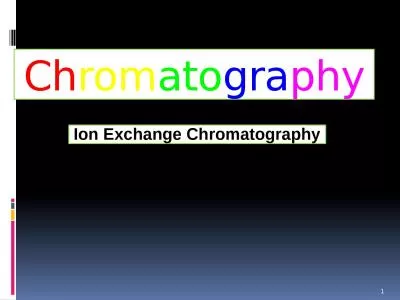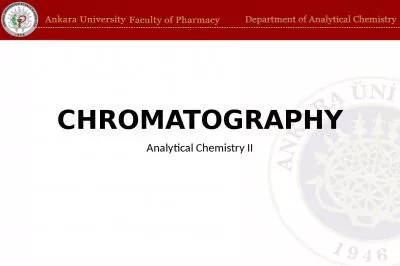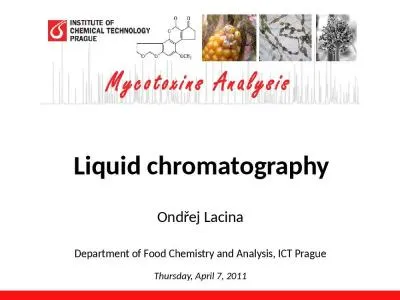PPT-Affinity Chromatography Mobile phase
Author : trinity | Published Date : 2022-06-07
Mobile phase is a liquid as water or dilute alcohol Separation mechanism Based on difference between the solutes molecular weights Molecules will distribute
Presentation Embed Code
Download Presentation
Download Presentation The PPT/PDF document "Affinity Chromatography Mobile phase" is the property of its rightful owner. Permission is granted to download and print the materials on this website for personal, non-commercial use only, and to display it on your personal computer provided you do not modify the materials and that you retain all copyright notices contained in the materials. By downloading content from our website, you accept the terms of this agreement.
Affinity Chromatography Mobile phase: Transcript
Download Rules Of Document
"Affinity Chromatography Mobile phase"The content belongs to its owner. You may download and print it for personal use, without modification, and keep all copyright notices. By downloading, you agree to these terms.
Related Documents

